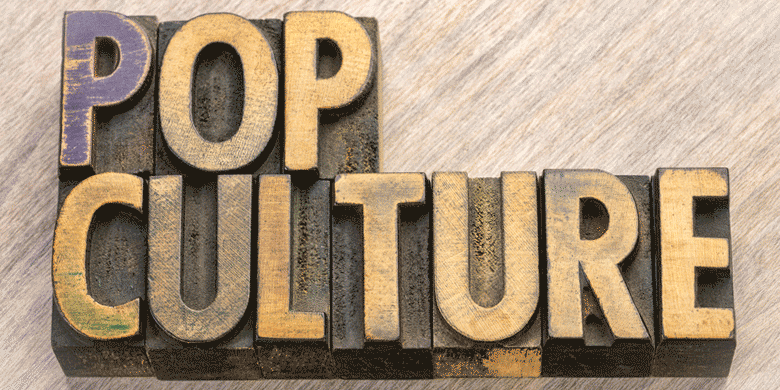
7 November, 2023
The Cap in Pop Culture: From Hollywood to Hip-Hop
In the glamorous world of fashion, one accessory has managed to bridge the realms of Hollywood dazzle and the invigorating beats of hip-hop — the baseball cap. A timeless article that has been reinvented in myriad ways, it is more than a piece of clothing; it is an embodiment of culture, artistry, and statement.
Golden Age of Hollywood

In the fledgling days of Hollywood, when the silver screen was the epitome of glamour and fashion dictated the trends that reverberated globally, the cap held a pivotal role in defining the elegance of that era. From newsboys to flat caps, the headgear of choice for many a star was a finely crafted cap that encapsulated more than just a fashion statement. It was an embodiment of style, sophistication, and in many ways, the marker of a gent.
Humphrey Bogart and the Fedora
Humphrey Bogart, an icon of his time, often donned a fedora. With its distinctive lengthwise crease and pinched front, this hat created a sense of mystery and allure, forging a potent on-screen image that left an indelible mark in the fashion world. Off the screen, Bogart’s choice of cap became a personal signature, seamlessly merging with his identity — a symbol of the rugged, enigmatic heartthrob of the golden age of Hollywood.
Cary Grant and the Timeless Elegance
Cary Grant, another titan of the era, embraced caps with an almost poetic grace. He had the uncanny ability to make anything he wore look timeless, with caps often completing his well-tailored suits. The choice of cap, often a meticulously chosen piece, harmonised with his outfits, creating a visual symphony of elegance that echoed the charm and sophistication Grant was renowned for. His sense of style became a guideline for generations, teaching men the art of dressing with a blend of effortlessness and grandeur.
During this period, the cap was not merely an accessory but a delineation of class, a marker of one’s stature in society. The material, the craftsmanship, and even the angle at which it was worn could speak volumes about the individual’s personal style and position in Hollywood's intricate social fabric. From luxurious silk linings to intricate stitching details, caps were crafted with a level of precision that was nothing short of artistry, bearing witness to the grandeur of the age.
1950's and 1960's Hollywood

The mid-20th century witnessed a tremendous shift in the global fashion landscape, with the cap playing a central role in setting style trends in Hollywood. The 1950s and 1960s were particularly notable, as they saw the cap evolving, moulding, and seamlessly blending with the changing aesthetic inclinations of society. Caps adorned the heads of the who's who in Hollywood, defining an epoch of style and elegance.
- Frank Sinatra and the Trilby
The 1950s were marked by the Rat Pack’s reign with Frank Sinatra at the helm, who brought the trilby hat into vogue. It became synonymous with Sinatra’s crooner style, lending an air of understated elegance and a maverick touch to his persona. The trilby was not just a fashion choice but an emblem of the casual yet sophisticated style that Sinatra epitomised.
- Audrey Hepburn’s Whimsical Charm
Audrey Hepburn, the epitome of grace, had a penchant for donning whimsical caps that added an element of charm to her ensembles. Be it the wide-brimmed hats in “Breakfast at Tiffany’s” or the pillbox hat she adorned in “Charade”, Hepburn’s choice of headgear always brought a blend of femininity and sophistication, setting a fashion statement that was as unique as her.
- James Dean: The Rebel Icon
James Dean catapulted to iconic status not just with his acting prowess but also through his iconic style. The rebel icon was often seen with a casual, almost nonchalant approach to his cap choices. From basic pork pie hats to simple peaked caps, Dean embraced a ‘cool’ aesthetic that was easy-going yet spoke volumes about his rebellious spirit, marking a significant departure from the more formal styles of earlier decades. Popularising the classic white T-shirt and red cap combo in "Rebel Without a Cause" was his most classic look.
- Brigitte Bardot and the Beret
The 1960s saw Brigitte Bardot bringing the French beret to the global stage, representing a blend of youthfulness and the burgeoning feminist movement. The beret became more than a cap; it was a statement of empowerment, a nod to the changing dynamics of society, and Bardot wore it with a flair that was unmistakably confident and liberated.
- Steve McQueen and the Baseball Cap
As we moved into the 60s, the cap landscape witnessed another transformation with Steve McQueen popularising the baseball cap. McQueen, known for his ‘King of Cool’ persona, brought a sporty, masculine edge to the cap, breaking away from the formal image it had carried for decades. This shift was more than fashion; it was a mirror to the changing society where casual, comfortable style was becoming the new vogue.
Caps in the Hip-Hop Epoch: The 80s and 90s

As the calendar pages flipped to the 80s and 90s, a seismic shift was happening in the cultural landscape, especially in the burgeoning world of hip-hop. Having found solid ground in this revolutionary era, the baseball cap blossomed to become more than just an accessory. It became a statement, a signature, and a canvas for artists to weave their narrative, express their individuality, and voice their stance.
- Tupac Shakur: The Poetic Maverick
Tupac Shakur’s name emerges as one of the forerunners when we talk about caps and hip-hop. The poetic maverick often sported baseball caps, choosing styles representing a fusion of street style with a touch of elegance. Be it the bandanas that were cleverly fashioned into a cap-like style, accentuating his thoughtful and rebellious spirit, or the straightforward baseball caps with bold messages, Tupac used his headgear to narrate a tale of resilience, hope, and the gritty reality of street life.
- Notorious B.I.G: The King of Brooklyn
The other powerhouse of the era was the King of Brooklyn, Notorious B.I.G. Biggie was often seen donning baseball caps, sometimes tilted to the side, imprinting his larger-than-life personality on his audience. His cap choices often displayed the logos of New York teams, paying homage to his hometown and weaving a rich tapestry of local culture, pride, and an unfiltered representation of the Brooklyn streets through his fashion choices.
- Queen Latifah: The Feminine Force
Queen Latifah stepped into the male-dominated industry, holding her ground firmly and carving out a niche for herself. Her style often involved baseball caps with bold, empowering messages, sometimes paired with African-inspired attire. Through her caps, Latifah not only brought a feminine touch to the hip-hop fashion landscape but also integrated elements of her African heritage, creating a fashion statement that was deeply personal and empowering.
- Dr. Dre and the NWA: Compton’s Narrators
With Dr. Dre at the forefront, the group NWA brought the raw, unfiltered narrative of Compton’s streets to the global stage. Their style was defined by black baseball caps with ‘Compton’ inscribed in bold, white letters, almost serving as a flag representing their roots. This choice of headgear was not just fashion; it was a loud, unapologetic announcement of their identity, etching the realities of Compton into the consciousness of their audience.
- LL Cool J: The Kangol Cap Maestro
LL Cool J brought a fresh twist to the cap trend by popularising Kangol bucket hats and caps, distinguishing himself with this signature look. The choice of Kangol caps brought a suave, stylish, yet street-smart aesthetic to his personality, showcasing the versatility of caps in the hip-hop fashion domain.
As we reminisce about the 80s and 90s hip-hop scene, the baseball cap stands as a powerful symbol intricately woven into the fabric of the culture. Icons of the era embraced the cap as a fashion accessory and a canvas to etch their narratives, roots, and individualities. The cap bore logos, inscriptions, and designs that went beyond aesthetics, offering a deep, poignant glimpse into the artists' lives, their stories, and the hip-hop culture's pulsating rhythm. It was a time of revolution, of voices rising through lyrics and fashion, and they stood as a silent yet potent emblem of this vibrant, powerful epoch, witnessing and narrating stories that were raw, real, and resoundingly resonant.
The 2000s and Beyond
As we entered the new millennium, the cap continued to evolve, adapting to the ever-changing fashion landscape. Designers and brands started playing with materials, textures, and shapes, giving birth to various cap styles.
Celebrities like David Beckham and Rihanna were spotted integrating caps into their daily fashion, showcasing the versatility of this accessory. Whether it was making a statement on the red carpet or a casual day out, the cap became a constant, a reflection of personal style and zeitgeist.
Today, baseball caps are a unifying symbol, bridging gaps between different cultures, ages, and fashion sensibilities. From the high-fashion runways of Paris and Milan to the vibrant street style, it is universally embraced, portraying a medley of stories, emotions, and expressions.
As we stand in 2023, the cap’s journey from Hollywood's golden screens to hip-hop's rhythmic beats is a testimony to its timeless appeal and adaptability. It is not just an accessory; it is a canvas of expression, a harmoniser of cultures, and a style icon in its own right. Whether adorning the heads of legends or gracing the everyday individual, the cap stands tall, a silent witness to the ever-evolving tapestry of pop culture, weaving histories, stories, and styles into its fabric, ever ready to forge into the future with the same undying spirit.
The Caps Only Team

